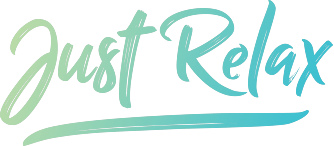
What exactly happens in my body during an epileptic seizure?
Basically, the clinical picture of epilepsy is very diverse. Therefore, one speaks of epilepsies rather than a specific epilepsy. In order not to give a biology lesson, I will briefly summarize the process in your body during an epileptic seizure.Epilepsy is first of all a neurological disease. That is, a disease of our nervous system. Since our nerves are distributed almost everywhere in our body, this disease naturally brings considerable damage. Sudden discharges of the nerve cells cause temporary failures of our nerve cells. Certain bodily functions such as walking, hearing or seeing can be severely restricted during this time or simply no longer function at all. Often, those affected then suffer from twitching, tremors or stiffening.
Forms of epilepsies
Generalized seizures
Generalized seizures are not limited to a specific area of the brain, but always involve both hemispheres of the brain. In addition, loss of consciousness is always expected. The most common seizure is the tonic-clonic seizure. About half of all epilepsy patients suffer from this particular seizure. The seizure can be divided into three main phases.
Phase 1: Sudden onset
In this phase, the whole body often stiffens and the affected person often falls to the ground as a result. All the muscles in the body now tense up. The affected person is now at the beginning of the seizure.
Phase 2: Between 30 seconds and 2 minutes
The affected person is now usually unresponsive, as he or she is in the middle of a seizure. Arms, legs or even the face. All twitching is now often present everywhere. Even the suspension of the ability to breathe is unfortunately not uncommon. In addition, the eyes often twist and foam forms in the mouth, because he has lost all control of his body.
Phase 3: Conclusion of the seizure
In this phase, the symptoms slowly subside and the affected person slowly regains consciousness. Because the affected person had previously tensed all muscles for a certain time, many patients also wake up drenched in sweat. Many are exhausted by this at first and therefore prefer to be alone for a while.
Absence seizures:
These are usually pronounced with milder symptoms. Sufferers often have a fixed stare for a few seconds and are also unresponsive. However, this only lasts for 10 to 20 Seconds. What is special, however, is that sufferers often have a seizure from one moment to the next and do not even remember it after the seizure, simply continuing the activity they were doing before as if nothing had happened. Unfortunately, short-lived absences are often mistaken for typical daydreaming, and because the affected person often doesn’t remember anything either, these lapses are not perceived as seizures.
Myoclonic seizures:
These are short-lasting muscle twitches, which can occur all over the body as well as sporadically. In contrast to the previous seizures, the affected person is conscious.

Is a cure possible?
Yes, thank God, the chance of improvement with medication is very high. However, a distinction must be made between a complete cure and the goal of living seizure-free. The chance of living seizure free with certain treatments is 80%. So, fortunately, pretty promising. A cure would be when the patient is able to stop taking the medication and then no longer has to suffer seizures.
Living with epilepsy
Of course, living with epilepsy brings many challenges. However, you should not let yourself be unnecessarily limited and make the best of your situation. Now you can find out how exactly you can make the best of various situations and what you should pay attention to as a person affected by epilepsy.
Epilepsy and sports:
Sport is generally always good and beneficial. This also applies to people with epilepsy. Sport increases the well-being and also has a positive influence on various seizures.Basically, people with epilepsy should also first look at which type of sport suits you. Whether team or individual sports, strength or endurance sports. Depending on your interests, you should then decide which sport suits you. Only then should you think about whether the sport actually brings restrictions. Because often there are not even restrictions for people with epilepsy and also only very few sports that would be completely excluded. Especially through sports, our self-confidence often builds up strongly. Epilepsy patients in particular often isolate themselves because they think that they would not be able to do it or would generally perform worse.
The desire to have children and epilepsy:
In principle, nothing stands in the way of planning a child if you yourself or your partner has epilepsy. Pregnancy is usually problem-free, although it can of course vary from person to person. Therefore, it is better to plan a possible pregnancy in time with the attending physician. Although the disease of epilepsy is not genetically hereditary, the readiness to develop seizures in certain situations is slightly increased. In addition, the fertility of the affected person could be reduced.
How should you react as an outsider?
The most important thing is that you, as an outsider, make sure that all sources of danger are out of reach. For example, sharp edges or pointed objects in case the affected person falls down and continues to twitch. In addition, you should not intervene immediately but wait and see. I can imagine that it can be really hard not to intervene. The natural instinct is to take action yourself, because the other person is helpless at that moment. You should therefore be aware that the attack will usually last only a few seconds. Therefore, try to prepare the environment for the time after the seizure. Get a glass of water(preferably filtered, decalcified water) and if possible a blanket. Nevertheless, seizures in public are not excluded. If it should be the case that you do not know the person personally, you should make sure that not too many people gather around. On the one hand, this is very unpleasant for the person concerned, and on the other hand, it is often simply annoying. Remain calm and check the pulse of the affected person. If there is no improvement after 5 min at the latest, you should contact the emergency physician. Behavior after the seizure :Most people are initially confused and anxious after a seizure. Therefore, talk to them and reassure them that everything is okay. You should also talk the person out of any feelings of shame. It is common for people to urinate during a seizure. Furthermore, you should never leave the person alone. No matter whether during or after a seizure. Not even to get help. Something can always go wrong suddenly and especially after a seizure, the affected person is dependent on your help. Often they are still weak, tired or disoriented.
Nutrition and relaxation in epilepsy
Some antiepileptic drugs often lead to vitamin deficiencies. Therefore, it is important to have a balanced diet. You should also make sure to eat fruits and vegetables at least five times a day. Furthermore, you should avoid any stressful situations, as stress is a frequent trigger for seizures. Avoid unnecessary noise and bright flickering lights if possible. In an extensive study, Sahaja Yoga (a simple form of meditation) was found to reduce seizures in patients. The patients were more relaxed and stress-free. In general, it can be said that everything that has a relaxing effect on the affected person also has a positive influence on the seizures. This includes a balanced diet as well as sports and exercise.
Progressive muscle relaxation (PME)
The basic idea of PME is to enable the patient to have a better feeling about his muscles. Specific muscle groups are to be tensed in a targeted manner. So that it should come to a targeted tension and relaxation. This can be carried out in behavioral therapy groups or you can take it into your own hands and try it with “PME” Cd ́s or books.
Ketogenic diet for epilepsy
So far, numerous studies have proven that the Ketogenic Diet leads to fewer seizures and can be effective in particularly severe cases of epilepsy is even used as precision medicine. In about half of all individuals, this very diet has produced serious improvements in the disease. Thus, sufferers for whom antiepileptic drugs do not respond should certainly consider the Ketogenic Diet. Why the Ketogene Diät works so successfully so far is not yet exactly clarified. Nevertheless it is to be assumed however that the Diät changes the intestine flora and thus successfully seizure-solving works. If you want to get more detailed information about the Ketogenic Diet, we have a detailed article for you here.
Meditation for epilepsy
First, lie down comfortably on your bed or sofa. It is best to take a light blanket over your body so that you feel a certain warmth. In addition, your room should be slightly darkened. Your eyes can then also relax better. If you are now lying down comfortably, start to close your eyes completely. Try to visually imagine how your limbs become heavier and heavier with each exhalation and how only complete relaxation flows through each of your arteries. Now imagine a beautiful and relaxing place where you can unwind for the next 5-10 minutes.









